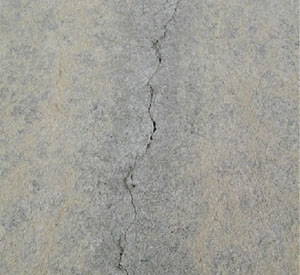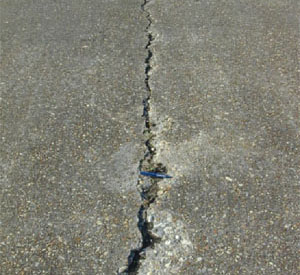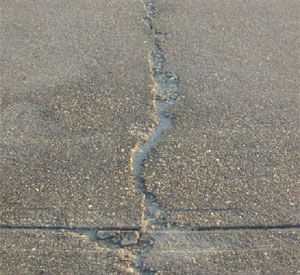LTD Cracking
Longitudinal, Transverse, and Diagonal (LTD) cracks, that divide the slab into two or three pieces, are usually caused by a combination load repetition, curling stresses, and shrinkage stresses. Low-severity cracks are usually warping- or friction-related and are not considered major structural distresses. Medium or high-severity cracks are usually working cracks and are considered major structural distresses.
| Severity | Distress Example | Description |
| Low |  | Crack has little or minor spalling (no FOD potential). If nonfilled, it has a mean width less than approximately 1/8 in (3 mm). A filled crack can be any width up to 3 in (76 mm) but the filler material must be in satisfactory condition; or the slab is divided into three pieces by low-severity cracks. |
| Medium |  | One of the following conditions exists: (1) filled or nonfilled crack is moderately spalled (some FOD potential); (2) a nonfilled crack has a mean width between 1/8 and 1 in (3 and 25 mm); (3) a filled crack is not spalled or only lightly spalled, but the filler is in unsatisfactory condition; or (4) the slab is divided into three pieces by two or more cracks, one of which is at least medium severity. |
| High |  | One of the following conditions exists: (1) filled or nonfilled crack is severely spalled, causing definite FOD potential; (2) a nonfilled crack has a mean width greater than approximately 1 in (25 mm), creating a tire damage potential; (3) the slab is divided into three pieces by two or more cracks, one of which is at least high severity; or (4) a filled crack is wider than 3 in (76 mm). |